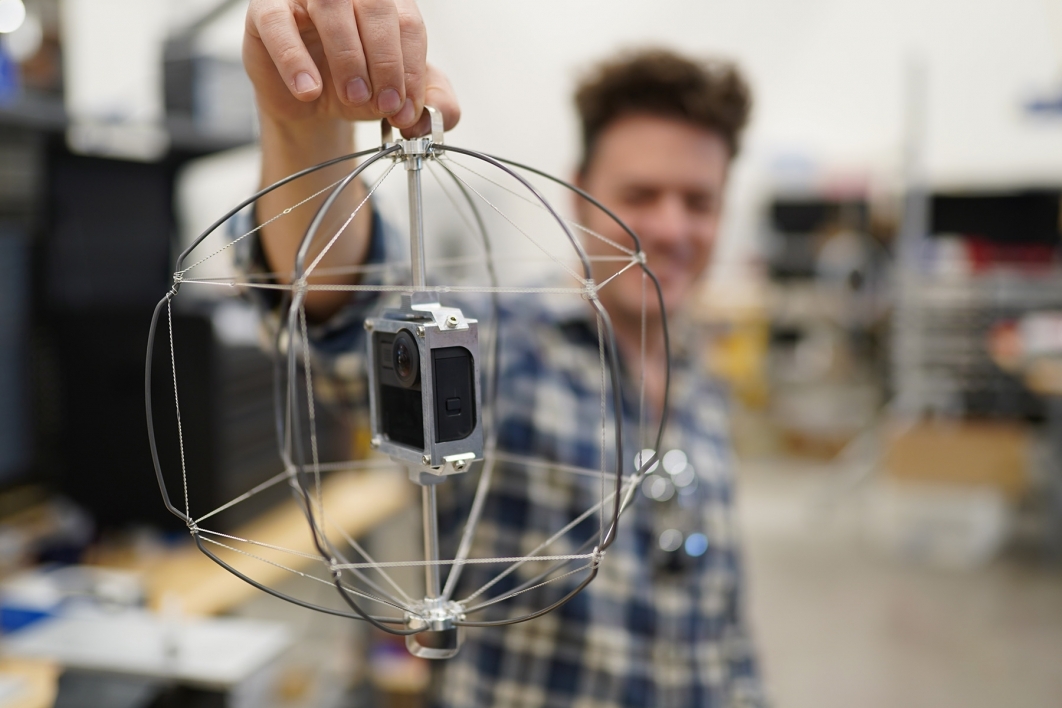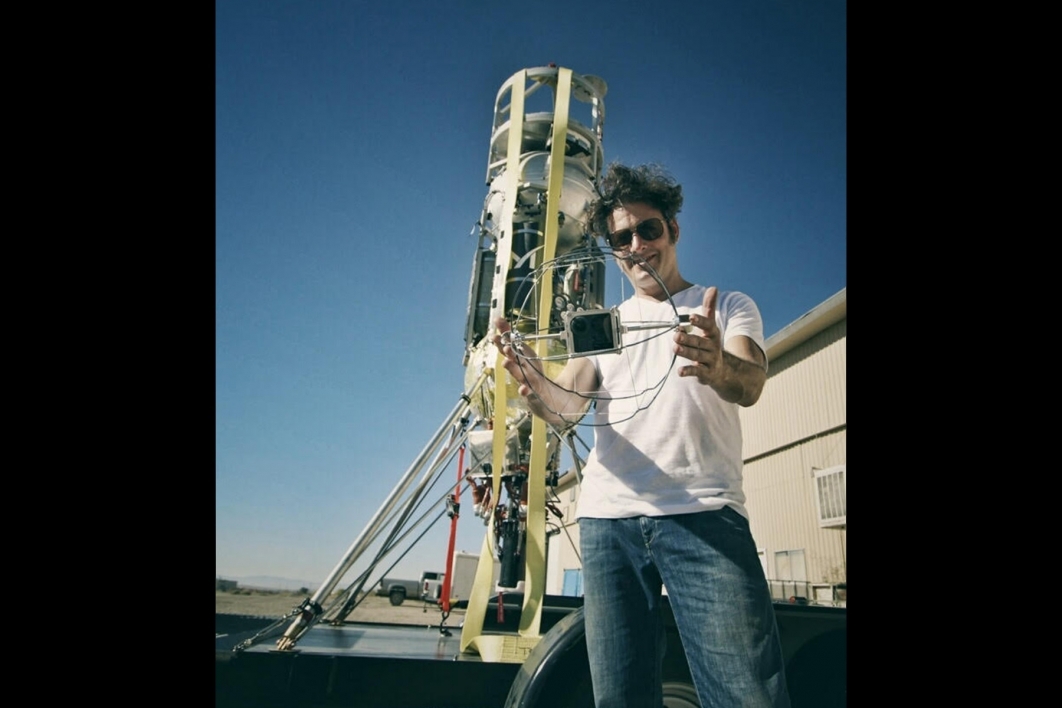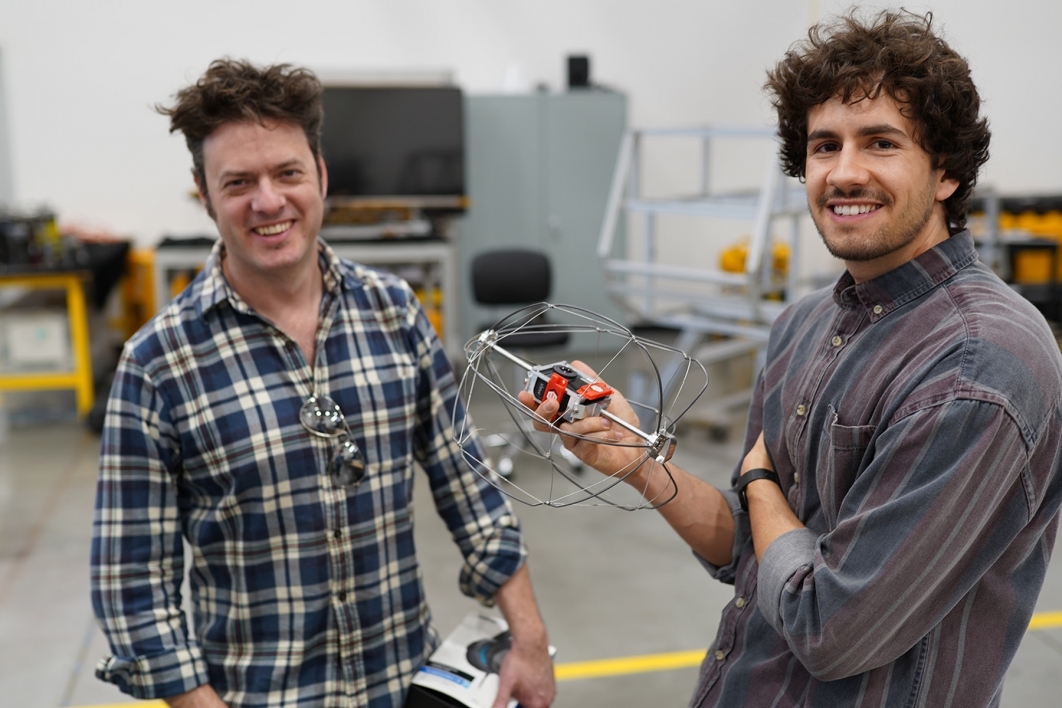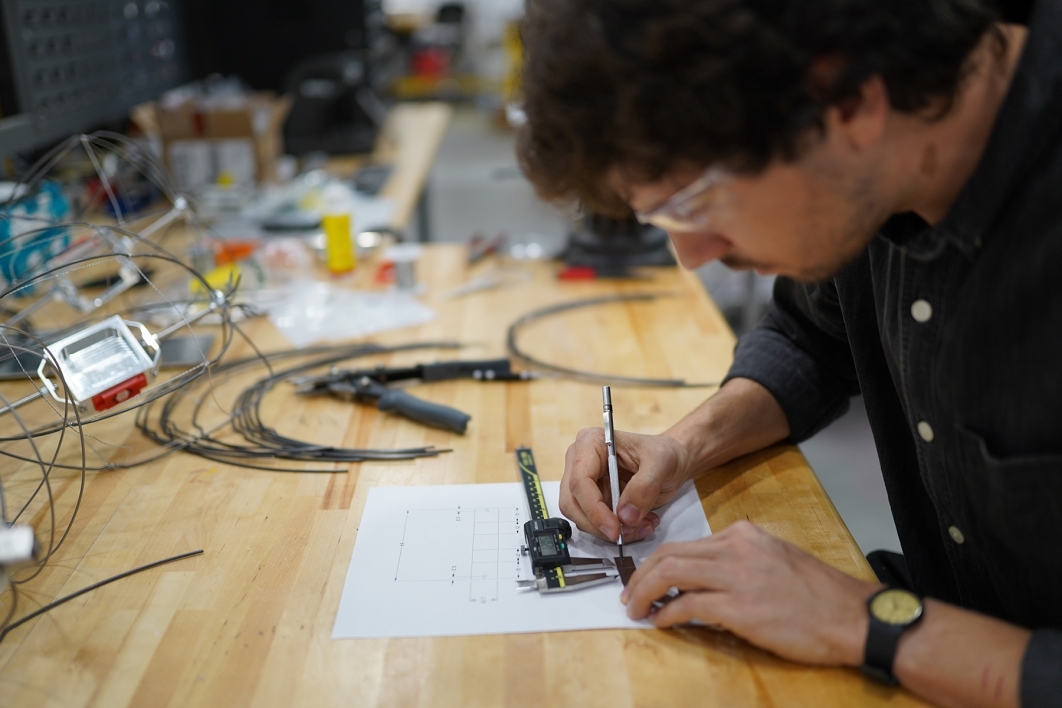NASA selects high-definition imaging system for commercial flight test
Two ASU professors part of Lunar ExoCam team

The Lunar ExoCam demo prototype, a payload concept for remotely capturing video during final descent and landing of landers and rockets on remote bodies like the moon. Credit: Will Hovik/Honeybee Robotics
In a recent announcement from NASA, 31 promising space technologies have been selected for testing aboard parabolic aircraft, high-altitude balloons and suborbital rocket-powered systems as part of NASA’s Space Technology Mission Directorate Flight Opportunities program.
Among those 31 technologies is the Lunar ExoCam, a high-definition imaging system designed to capture the first-ever video of a lunar lander’s final descent and landing taken from the moon’s surface.
Arizona State University professors Jnaneshwar Das and Jim Bell of the School of Earth and Space Exploration are a part of the Lunar ExoCam team, led by principal investigator Jason Achilles Mezilis of Zandef Deksit Inc. and including representatives from Honeybee Robotics, Ecliptic Enterprises Corp. and Masten Space Systems. The team was awarded a $650,000 grant for this project.
“We will investigate the best methods to produce and transmit real-time 3D panoramic footage of the lander,” said Das, who is also the ASU lead for the Lunar Surface Innovation Consortium’s Extreme Access focus group.
In addition, the team also will be addressing various science questions, including how the lander plume will interact with surface soil and rock, which is important for lander safety and could lead to necessary surface modifications.
“If all goes well, Lunar ExoCam could be ready to fly on some of the private robotic landers that are scheduled to launch toward the moon in the next few years,” Mezilis said. “It would be thrilling to have this camera system ready for NASA's crewed Artemis 3 mission, and capture that historic landing with such a unique viewpoint.”
The Lunar ExoCam will use their funding to purchase a flight from a U.S. commercial suborbital flight vendor that best meets their needs – a process that can help shorten the timeline for bringing innovation from lab-based testing to full spaceflight. The team is expected to fly on the Masten Xodiac rocket in summer 2021.
To prepare for flight, the team will analyze ExoCam data already acquired at the Mojave Desert in 2020 by Zandef Deksit with Masten Space Systems.
The Lunar ExoCam static camera test. This payload concept is being tested to remotely capture video during final descent and landing of landers and rockets on remote bodies like the moon.
Das and Bell will also develop an aerial drone testbed to evaluate ExoCam prototypes. Aspects of this effort are being integrated into the Autonomous Exploration Systems spring special topics course (SES 494/598) at the School of Earth and Space Exploration.
“An important component of this project will be to integrate the ExoCam effort with our existing cyberphysical systems (CPS) student competition supported by the National Science Foundation,” Das said. “In that competition, student teams will emulate the lunar lander and ExoCam system using drones. They will be designing, building and flying iterations of each, with the goal of making improvements to the hardware and software.”
The goal behind the NASA funding is to expose innovations to many of the rigors and characteristics of spaceflight without the expense of an orbital flight and help ensure these technologies work correctly when they are deployed on future missions.
“By supporting suborbital flight testing, our Flight Opportunities program aims to help ensure that these innovations are well-positioned to address challenges and enable NASA to achieve its lunar ambitions, while also contributing to a growing and vibrant commercial space industry,” said Jim Reuter, associate administrator of NASA’s Space Technology Mission Directorate, in a press release.
The Flight Opportunities program is funded by NASA’s Space Technology Mission Directorate and managed at NASA's Armstrong Flight Research Center in Edwards, California.
More Science and technology

Famed systems engineer inspires ASU to tackle global problems
“Providing great talent with great opportunity can make a great difference.” Such was a key part of the message delivered by G.…

The science behind chronic stress
Stress comes in many shapes and sizes. There’s the everyday stress of preparing for a final exam or being stuck in traffic. And…

ASU planetary scientist to be inducted into the National Academy of Sciences
The National Academy of Sciences is inducting School of Earth and Space Exploration Director Meenakshi Wadhwa into the 2023 class…



